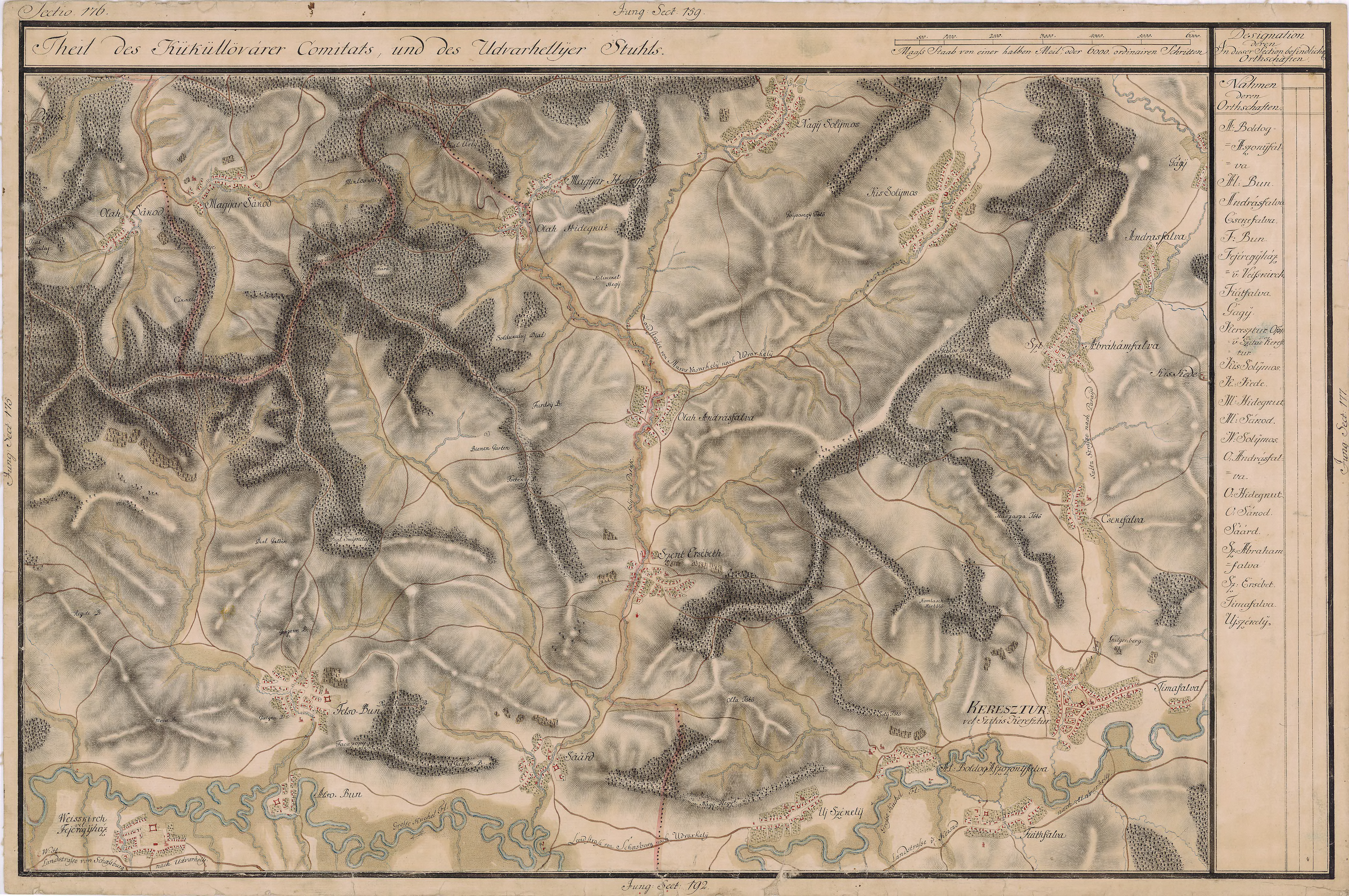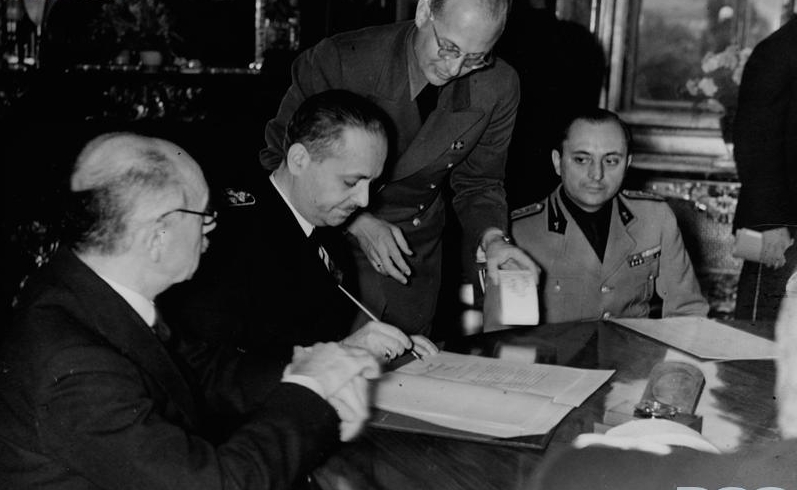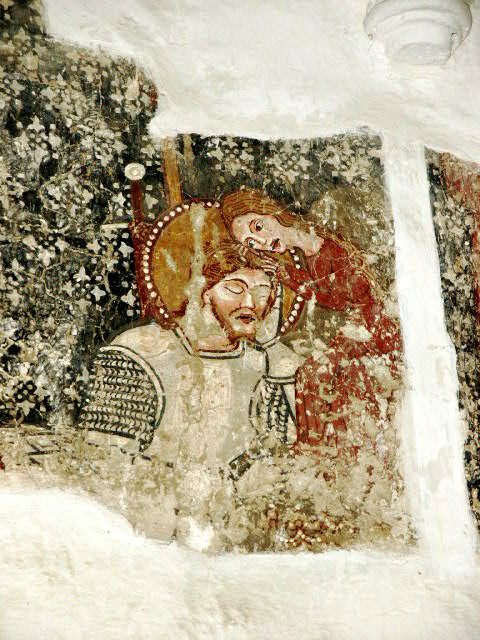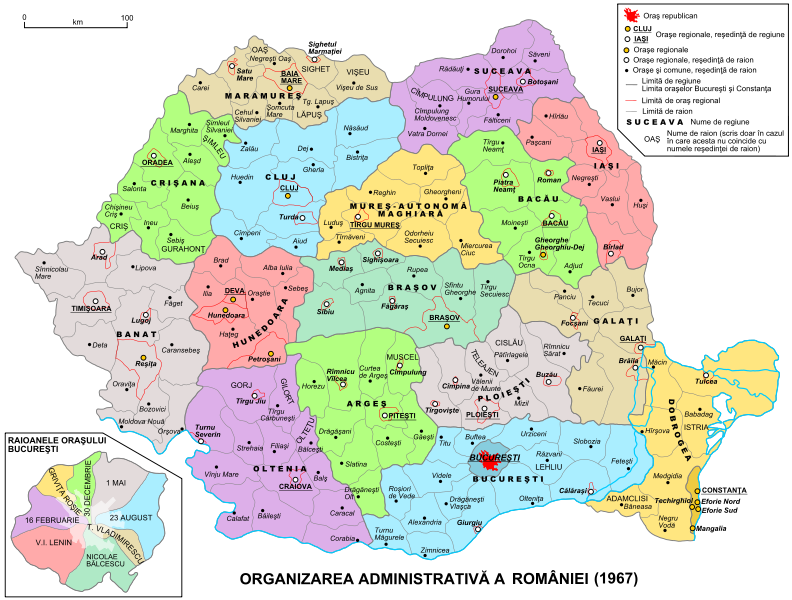|
Săcel, Harghita
Săcel (, Hungarian pronunciation: ) is a commune in Harghita County, Romania. It lies in the Székely Land, an ethno-cultural region in eastern Transylvania. The commune lies on the Transylvanian Plateau. It is located in the southwestern extremity of the county, on the border with Mureș County. Component villages The commune is composed of five villages: History The villages were part of the Székely Land region of the historical Transylvania province. They belonged to Udvarhelyszék district until the administrative reform of Transylvania in 1876, when they fell within the Udvarhely County in the Kingdom of Hungary. After the Treaty of Trianon of 1920, they became part of Romania and fell within Odorhei County during the interwar period. In 1940, the second Vienna Award granted the Northern Transylvania to Hungary and the villages were held by Hungary until 1944. After Soviet occupation, the Romanian administration returned and the commune became officially part of Rom ... [...More Info...] [...Related Items...] OR: [Wikipedia] [Google] [Baidu] |
Harghita County
Harghita County (, and , ) is a county () in the center of Romania, in eastern Transylvania, with the county seat at Miercurea Ciuc. Demographics 2002 census In 2002, Harghita County had a population of 326,222 and a population density of 52/km2. * Hungarians – 84.62% (or 276,038) * Romanians – 14.06% (or 45,870) * Romani – 1.18% (or 3,835) * Others – 0.14% 2011 census In 2011, it had a population of 302,432 and a population density of 46/km2. * Hungarians – 85.21% (or 257,707) * Romanians – 12.96% (or 39,196) * Romani * Others – 1.76% (or 5,326). 2021 census In 2021, it had a population of 291,950, and a population density of 43/km2. * Hungarians – 85.67% (or 232,157) * Romanians – 12.41% (or 33,634) * Romani - 1.82% (or 4,928) * Others – 0.1% (or 282). Harghita county has the highest percentage of Hungarians in Romania, just ahead of Covasna county. The Hungarians form the majority of the population in most of the county's municipal ... [...More Info...] [...Related Items...] OR: [Wikipedia] [Google] [Baidu] |
Second Vienna Award
The Second Vienna Award was the second of two territorial disputes that were arbitrated by Nazi Germany and the Kingdom of Italy. On 30 August 1940, they assigned the territory of Northern Transylvania, including all of Maramureș and part of Crișana, from the Kingdom of Romania to the Kingdom of Hungary (1920–46), Kingdom of Hungary. Background After World War I, the multiethnic Lands of the Crown of Saint Stephen, Kingdom of Hungary was divided by the 1920 Treaty of Trianon to form several new nation states, but Hungary noted that the new state borders did not follow ethnic boundaries. The new nation state of Hungary was about a third the size of prewar Hungary, and millions of ethnic Hungarians were left outside the new Hungarian borders. Many historically-important areas of Hungary were assigned to other countries, and the distribution of natural resources was uneven. The various non-Hungarian populations generally saw the treaty as justice for their historically-margina ... [...More Info...] [...Related Items...] OR: [Wikipedia] [Google] [Baidu] |
Székely Communities
Székely may refer to: *Székelys, Hungarian people from the historical region of Transylvania, Romania **Székely Land, historic and ethnographic area in Transylvania, Romania *Székely (village), a village in northeastern Hungary * Székely (surname) * Szekely Aircraft Engine * György Dózsa György Dózsa (or ''György Székely'', Romanian: ''Gheorghe Doja''; – 20 July 1514) was a Székely man-at-arms from Transylvania, Kingdom of Hungary who led a peasants' revolt against the kingdom's landed nobility during the reign ..., also referred to as György Székely See also * Secuieni (other) (a term linked to the Székelys in Romanian) {{DEFAULTSORT:Szekely ... [...More Info...] [...Related Items...] OR: [Wikipedia] [Google] [Baidu] |
Reformed Church In Romania
The Reformed Church in Romania (; ) is a Calvinist denomination and the largest Protestant church in Romania. The majority of its followers are of Hungarian ethnicity and Hungarian is the main church language. The large majority of the Church's parishes are in Transylvania; according to the 2021 census, 495,380 people or 2.6% of the total population belong to the Reformed Church. About 95% of the members were of Hungarian ethnicity. The religious institution is composed of two bishoprics, the Reformed Diocese of Királyhágómellék and the Reformed Diocese of Transylvania. The headquarters are at Oradea and Cluj-Napoca, respectively. Together with the Unitarian Church of Transylvania and the two Lutheran churches of Romania (the Evangelical Lutheran Church in Romania and the Evangelical Church of Augustan Confession), the Calvinist community runs the Protestant Theological Institute of Cluj. Doctrine The church adheres to the: Creeds * Apostle Creed *Nicene Creed ... [...More Info...] [...Related Items...] OR: [Wikipedia] [Google] [Baidu] |
Unitarian Church Of Transylvania
The Unitarian Church of Transylvania (; ), also known as the Hungarian Unitarian Church (; ), is a Nontrinitarian Christian denomination of the Unitarian tradition, based in the city of Cluj, Transylvania, Romania. Founded in 1568 in the Eastern Hungarian Kingdom by the Unitarian preacher and theologian Ferenc Dávid (c. 1520–1579), it is the oldest continuing Unitarian denomination in the world. It has a majority- Hungarian following, and is one of the 18 religious denominations given official recognition by the Government of Romania. The Transylvanian and Hungarian Unitarians represent the only branch of Unitarianism not to have adopted a congregationalist polity, and remains quasi- episcopal; the Irish Non-subscribing Presbyterian Church, a distinct body closely related to Unitarianism, has a presbyterian structure.Paul F. Bradshaw, ''The New SCM Dictionary of Liturgy and Worship'', SCM-Canterbury Press Ltd, London, 2002, p.460. The Unitarian Church of Transylvania is ... [...More Info...] [...Related Items...] OR: [Wikipedia] [Google] [Baidu] |
Romanian Orthodox Church
The Romanian Orthodox Church (ROC; , ), or Romanian Patriarchate, is an autocephalous Eastern Orthodox church in full communion with other Eastern Orthodox Christian denomination, Christian churches, and one of the nine patriarchates in the Eastern Orthodox Church organization, Eastern Orthodox Church. Since 1925, the church's Primate (bishop), Primate has borne the title of Patriarch. Its jurisdiction covers the territories of Romania and Moldova, with additional dioceses for Romanians living in nearby Ukraine, Serbia and Hungary, as well as for diaspora communities in Central Europe, Central and Western Europe, North America and Oceania. It is the only autocephalous church within Eastern Orthodoxy to have a Romance languages, Romance language for liturgical use. The majority of Romania's population (16,367,267, or 85.9% of those for whom data were available, according to the 2011 census data), as well as some 720,000 Moldovans, belong to the Romanian Orthodox Church. Members o ... [...More Info...] [...Related Items...] OR: [Wikipedia] [Google] [Baidu] |
Romani Language
Romani ( ; also Romanes , Romany, Roma; ) is an Indo-Aryan languages, Indo-Aryan macrolanguage of the Romani people. The largest of these are Vlax Romani language, Vlax Romani (about 500,000 speakers), Balkan Romani (600,000), and Sinte Romani (300,000). Some Romani communities speak mixed languages based on the surrounding language with retained Romani-derived vocabulary – these are known by linguists as Para-Romani varieties, rather than dialects of the Romani language itself. The differences between the various varieties can be as large as, for example, the differences between the Slavic languages. Name Speakers of the Romani language usually refer to the language as ' "the Romani language" or '' (adverb)'' "in a Rom way". This derives from the Romani word ', meaning either "a member of the (Romani) group" or "husband". This is also the origin of the term "Roma" in English, although some Roma groups refer to themselves using other demonyms (e.g. 'Kaale', 'Sinti'). C ... [...More Info...] [...Related Items...] OR: [Wikipedia] [Google] [Baidu] |
National Institute Of Statistics (Romania)
The National Institute of Statistics (, INS) is a Romanian government agency which is responsible for collecting national statistics, in fields such as geography, the economy, demographics and society. The institute is also responsible for conducting Romania's census every ten years, with the latest census being organised in 2022. Leadership The head of the NIS is currently Tudorel Andrei, while the three vice-presidents are: * Ioan-Silviu VÎRVA, in charge of economic and social statistics * Marian Chivu, in charge of national accounts and the dissemination of statistical information * Beatrix Gered, in charge of IT activities and statistical infrastructure History Romania's first official statistics body was the Central Office for Administrative Statistics (''Oficiul Central de Statistică Administrativă''), established on July 12, 1859, under the reign of Alexandru Ioan Cuza. The organisation, one of the first national statistics organisations in Europe, conducted its ... [...More Info...] [...Related Items...] OR: [Wikipedia] [Google] [Baidu] |
Romani People
{{Infobox ethnic group , group = Romani people , image = , image_caption = , flag = Roma flag.svg , flag_caption = Romani flag created in 1933 and accepted at the 1971 World Romani Congress , pop = 2–12 million , region2 = United States , pop2 = 1 million estimated with Romani ancestry{{efn, 5,400 per 2000 United States census, 2000 census. , ref2 = {{cite news , first=Kayla , last=Webley , url=http://content.time.com/time/nation/article/0,8599,2025316,00.html , title=Hounded in Europe, Roma in the U.S. Keep a Low Profile , agency=Time , date=13 October 2010 , access-date=3 October 2015 , quote=Today, estimates put the number of Roma in the U.S. at about one million. , region3 = Brazil , pop3 = 800,000 (0.4%) , ref3 = , region4 = Spain , pop4 = 750,000–1.5 million (1.5–3.7%) , ref4 = {{cite web , url ... [...More Info...] [...Related Items...] OR: [Wikipedia] [Google] [Baidu] |
Romanians
Romanians (, ; dated Endonym and exonym, exonym ''Vlachs'') are a Romance languages, Romance-speaking ethnic group and nation native to Central Europe, Central, Eastern Europe, Eastern, and Southeastern Europe. Sharing a Culture of Romania, common culture and Cultural heritage, ancestry, they speak the Romanian language and live primarily in Romania and Moldova. The 2021 Romanian census found that 89.3% of Romania's citizens identified themselves as ethnic Romanians. In one interpretation of the 1989 census results in Moldova, the majority of Moldovans were counted as ethnic Romanians as well.''Ethnic Groups Worldwide: A Ready Reference Handbook By'' David Levinson (author), David Levinson, Published 1998 – Greenwood Publishing Group.At the time of the 1989 census, Moldova's total population was 4,335,400. The largest nationality in the republic, ethnic Romanians, numbered 2,795,000 persons, accounting for 64.5 percent of the population. Source U.S. Library of Congres ... [...More Info...] [...Related Items...] OR: [Wikipedia] [Google] [Baidu] |
Hungarians
Hungarians, also known as Magyars, are an Ethnicity, ethnic group native to Hungary (), who share a common Culture of Hungary, culture, Hungarian language, language and History of Hungary, history. They also have a notable presence in former parts of the Kingdom of Hungary. The Hungarian language belongs to the Ugric languages, Ugric branch of the Uralic languages, Uralic language family, alongside the Khanty languages, Khanty and Mansi languages, Mansi languages. There are an estimated 14.5 million ethnic Hungarians and their descendants worldwide, of whom 9.6 million live in today's Hungary. About 2 million Hungarians live in areas that were part of the Kingdom of Hungary before the Treaty of Trianon in 1920 and are now parts of Hungary's seven neighbouring countries, Hungarians in Slovakia, Slovakia, Hungarians in Ukraine, Ukraine, Hungarians in Romania, Romania, Hungarians in Serbia, Serbia, Hungarians of Croatia, Croatia, Prekmurje, Slovenia, and Hungarians in Austria, Aust ... [...More Info...] [...Related Items...] OR: [Wikipedia] [Google] [Baidu] |
Magyar Autonomous Region
The Magyar Autonomous Region (1952–1960) (; ) and Mureș-Magyar Autonomous Region (1960–1968) were autonomous Regions of the People's Republic of Romania, regions in the Romanian People's Republic (later the Socialist Republic of Romania). History One of the key factors behind the autonomous region was the desire of the communist Romanian government to win over the Hungarian population in Transylvania. Support for the Romanian Communist Party was very strong in ethnically Hungarian areas, and Hungarian communists made up 26% of all communists in Romania before World War II. Following the Hungarian Northern Transylvania, rule of Northern Transylvania during World War II, ethnic Hungarians now made up 10% of Romanian population, and the communist government adopted a policy of appeasement towards the Hungarian minority; this was a pragmatic stance as in contrast to largely pro-socialist Hungarians in Romania, ethnic Romanians were unsupportive of the Communist Party and the com ... [...More Info...] [...Related Items...] OR: [Wikipedia] [Google] [Baidu] |






